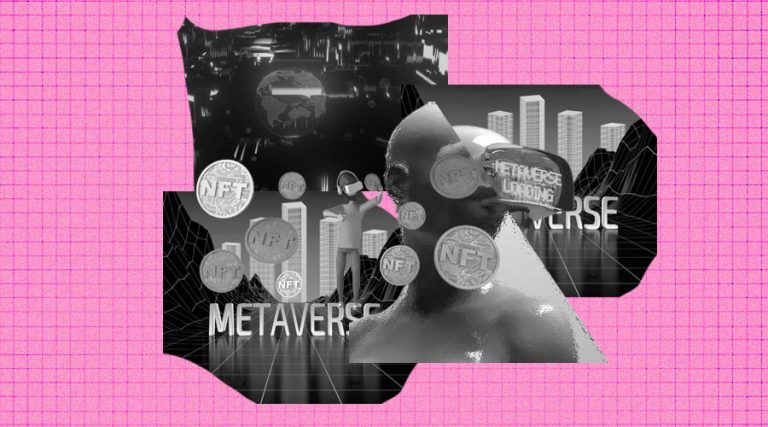
The rise of the metaverse is sure to lead to the creation of new marketing techniques and opportunities to explore the 3D virtual world.
The metaverse has become inseparable from Web3 culture. Companies are racing to put out their own metaverses, from small startups to Mark Cuban and, of course, Meta. Before companies race to put out a metaverse, it’s important to understand what the metaverse actually is. NFTs will be a fundamental part of the Metaverse. As users navigate virtual worlds, they’ll be able to pick up items, receive rewards, own things, and buy and sell items and services, just like they can in the real world.
The State of NFT Data Storage
In the last year, creative has earned billions of dollars selling digital art, collectibles, and game items to their true fans using NFTs. NFTs are tokens that represent ownership of unique assets on a blockchain. Each NFT project has a smart contract that lives on the blockchain and keeps track of who owns which asset.
The core of every NFT is its metadata. This metadata consists of a description of the NFT (name, attributes, properties, etc.) and a pointer to its media files (images, video, audio, etc.). Storing this information directly on a blockchain is expensive, so most NFT projects store their data elsewhere and only keep a link to it in their smart contract.
Digital twins create a universe of information about buildings or other physical assets and are tied to the physical world. In other words, they are that meta-layer. By integrating blockchain technology, in the form of NFTs, all data and information surrounding the physical twin can be verified and saved, forever, all tracked with the asset itself. When you think about it, digital twins are the metaverse versions of the physical twins, and the technology enhances features of the real world.
Owning bits
Why NFTs? Well because NFTs are built on blockchain technology that gives rightful ownership to the NFT holders. So for instance, if you own land in the metaverse (which is quite possible), you get an NFT as the deed to the virtual property. This means you are the rightful owner and only you have exclusive access to enter the location in metaverse alongside allowing access to others. NFT-controlled access could also help in ensuring VIP access to the events in the metaverse.
Blockchain is a technology that permanently records transactions, typically in a decentralized and public database called a ledger. Bitcoin is the most well-known blockchain-based cryptocurrency. Every time you buy some bitcoin, for example, that transaction gets recorded to the Bitcoin blockchain, which means the record is distributed to thousands of individual computers around the world.
This decentralized recording system is very difficult to fool or control. Public blockchains, like Bitcoin and Ethereum, are also transparent – all transactions are available for anyone on the internet to see, in contrast to traditional banking books.
Future Impact of the Metaverse on Marketing
The rise of the metaverse is sure to lead to the creation of new marketing techniques and opportunities to explore the 3D virtual world. The Metaverse is a nexus of markets, decentralized government, digital identities, and other elements.
Companies can use Metaverse to attract new audiences, boost consumer confidence, and investigate a potential revenue stream. For example, Roboblox boasts 200 million active players who spent $319 million on in-game cash in the first half of 2020.
The sky’s the limit for savvy marketers on the block as big brands like Nike, Facebook, and Gucci continue to position themselves into the present Metaverse, employing gaming platforms like Fortnite and Roboblox to produce immersive forms of advertising and new forms of viral brand awareness.